Follow the Garbage: Slovenian Backpack Ends Up in Pakistan
Maja Čakarić, Klara Škrinjar
—
A backpack equipped with a tracking device that Oštro dropped off in a waste bin in Moravske Toplice, Slovenia, pinged back its location from a port in Oman, from where it travelled on to Pakistan. The country is the most popular destination for second-hand clothing from the EU.
The torn backpack was dropped off in Slovenia. It travelled through Hungary to the Port of Rijeka, Croatia, where it was loaded, along with other assorted cargo, onto the 353-metre container ship Maersk Hidalgo and set sail for Oman. (Stock photo by Unsplash)
Follow the Garbage project is supported by Pulitzer Center
For the Follow the Garbage investigation, Oštro equipped thirty more or less ordinary pieces of household waste with trackers to test the waste management system.
One of the pieces was a torn backpack that reporters dropped off in a waste bin in Moravske Toplice, in northeastern Slovenia, in mid-November last year. But just before the publication of Follow the Garbage, Oštro lost track of it. The tracker reported back from the Port of Rijeka, Croatia, whereupon the signal vanished.
Two weeks after publication, Oštro’s reporter and editor-in-chief were giving an interview about the project for Tednik, a current-affairs show on Slovenian public broadcaster TV Slovenija. The show’s creators also wanted a shot of the app that Oštro reporters used to monitor the journey of the waste.
That was when the backpack made a surprise appearance. The tracker had sprung back to life and was sending a signal – from Port Salalah in Oman. A week after its stop in Salalah, the device reported back from the NLC container terminal in Karachi, Pakistan’s largest city.
Sorting in Hungary
Oštro reporters dropped off the backpack last November in a waste textile bin in Moravske Toplice managed by the waste utility company Saubermacher Komunala Murska Sobota. All the textiles collected in these waste bins are shipped and sold to a waste sorting facility in Hungary, the West Hungary Textil plant, with which Saubermacher Komunala Murska Sobota has collaborated since 2019.
We padded the tracker with a filler and hid the tracker in the backpack. Photo: Oštro
In January, West Hungary Textil did not respond to Oštro. In May, we asked our colleagues from Hungary for help, but they were unsuccessful as well. The company’s website says they sort clothing by type, quality and season, package it, and sell it on.
The highest quality clothing is sold in Hungary and neighbouring countries, summer clothing is mostly shipped to African countries and the Middle East, while clothing that is »inexpensive but good quality« is dispatched to Asia, mostly to Pakistan, the website claims.
Data on the export and import of commercial shipments worldwide compiled by Panjiva, a trade data company, shows that between 2017 and 2020 West Hungary Textil exported second-hand clothing, shoes, toys, and other merchandise totalling $148,000. The merchandise was imported by the Karachi-based companies G. R. International and Gul Trading Co, which specialise in the import and sale of second-hand clothing.
There is no recent data for West Hungary Textil exports to Pakistan. It is possible the Oštro backpack was exported by a different company this time.
According to Comtrade, a database managed by the United Nations’ statistics department, last year Hungary exported $2.44 million worth of second-hand clothing and other textile products, strongly exceeding revenue from the previous three-year period. There is no comparable data for Slovenia.
From Croatia to Pakistan
To determine how the backpack travelled from the Port of Rijeka to Karachi, we analysed the tracker’s data and shipping databases then pieced together the most likely itinerary.
We dropped the backpack off in Moravske Toplice in mid-November and a month or so later the tracker reported its location from Hungary. From December until January, it was in the West Hungary Textil plant in Zalaegerszeg, about 50 kilometres from the Dolga Vas border crossing with Slovenia, from where it travelled to Rijeka, most likely by train.
It left the Port of Rijeka on 25 January aboard the 353-metre container ship Maersk Hidalgo, which sails under the Singaporean flag and plies the route between Europe and Asia. According to data by the shipping company Maersk, the ship regularly sails on the Koper-Shanghai route. Port Salalah in Oman is one its stops.
The ship sailed forth towards Sri Lanka and Singapore, but the backpack did not. Judging by the Maersk schedule and data available to Oštro, we were able to determine that the container was transhipped to the ship Rosa in Salalah and in five days shipped again to Port Qasim in Karachi.
From there, it was transported by lorry from the Al-Hamd International Container Terminal to the NLC Container Terminal. This is where the tracker reported its location on 14 February.
A New Life for Old Textiles
The tracker in the backpack then spent almost three weeks broadcasting its location from Shershah Market in western Karachi where, as Oštro’s Pakistani colleague has seen, there were rows upon rows of warehouses and stores with car parts, electronics, cosmetics past their due date, items returned by Amazon shoppers, and clothing.
The import of second-hand and obsolete textiles is a thriving industry in Pakistan. According to Comtrade, the value of such imports to Pakistan almost doubled last year, to $402 million.
Volume-wise, Pakistan was the largest importer of second-hand clothing in the world last year. It imported 934 thousand tonnes of such merchandise, almost five times as much as India and six times more than the biggest importer among EU member states, Netherlands.
Waseem Akhtar of the Federation of Pakistan Chambers of Commerce and Industry told Oštro that Pakistan imports most of the second-hand clothing and other textiles from the United States, about 50 to 60 percent. Some 10 to 5 percent of such imports come from European countries and the rest mostly from Australia, Singapore, South Korea, and China.
Once the clothing arrives at the container terminal in Port Salalah in Karachi, it is dispatched to hundreds of warehouses in the city owned by wholesalers, according to Akhtar. The clothing and other textile products are packaged into bales several metres tall, sorted by type, size, and quality.
At these warehouses the goods are washed, if necessary, folded, packaged into smaller bales, and then shipped to smaller wholesalers or to larger retailers. At the end of this long chain of sellers are individuals called hawkers, who carry the clothing on their backs and sell it to buyers from the lowest social classes.
This is probably the kind of chain that the torn backpack from Slovenia ended up in. For fifteen days it did not move from a small area in Shershah Market, where there are about 300 small shops selling, warehousing and repairing textiles, according to the Oštro’s colleague in Pakistan.
One such business is The Lunda Shop by Karachi Man. In Urdu lunda means female slave, and this is what the locals call second-hand clothing. Alas, Oštro’s contributor did not find the Slovenian backpack. The space was nearly empty, he reported. A tailor was repairing a damaged purse and other workers were sorting various items and collecting them in smaller piles.
After the items are repaired, they are typically picked up by a business partner, a co-owner of the shop explained. Clothing and purses are sold by weight, for three dollars per kilo. The minimum amount is 50 kilos.
GALLERY: From Oštro’s office to a Pakistani bazaar


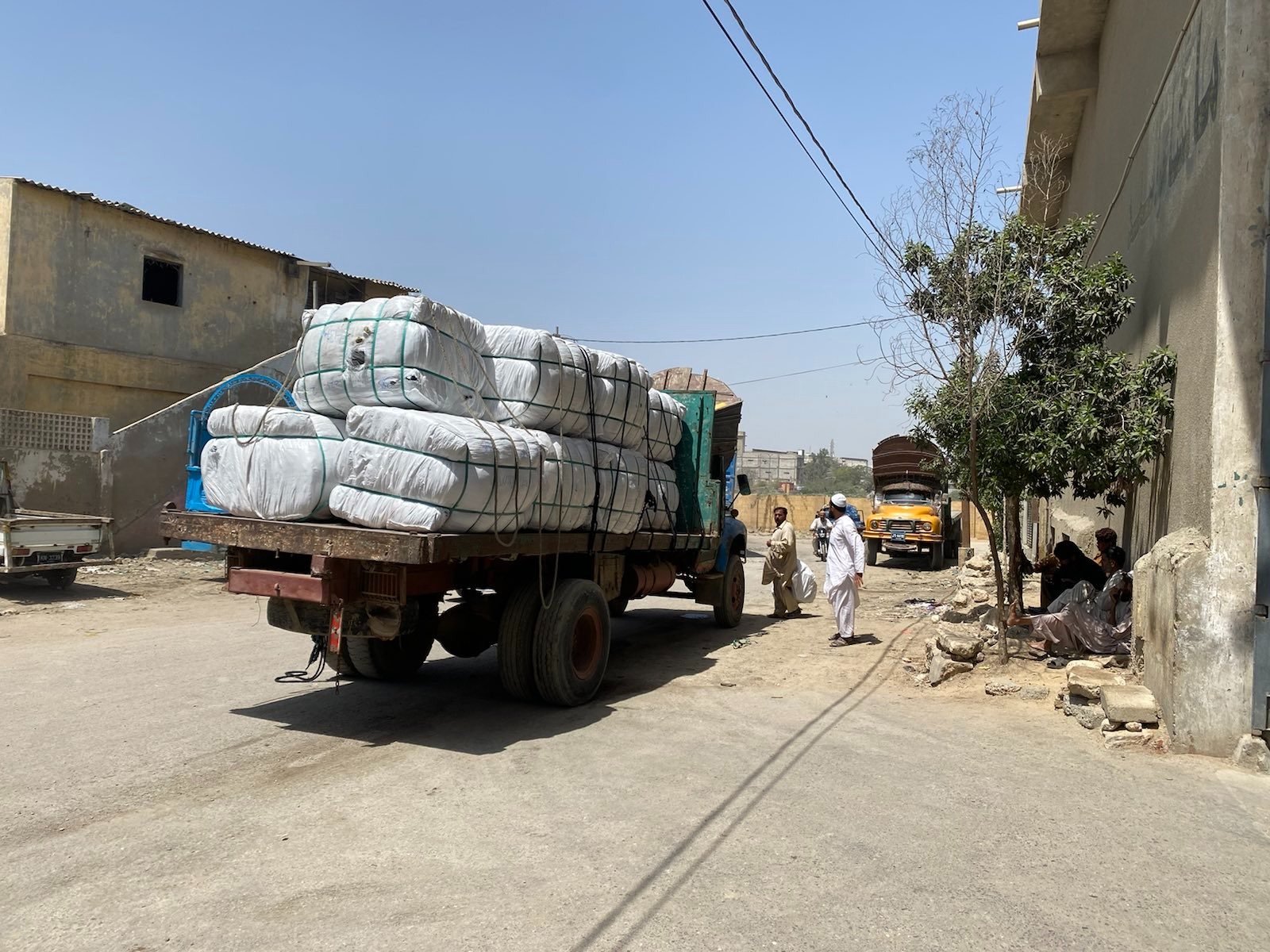
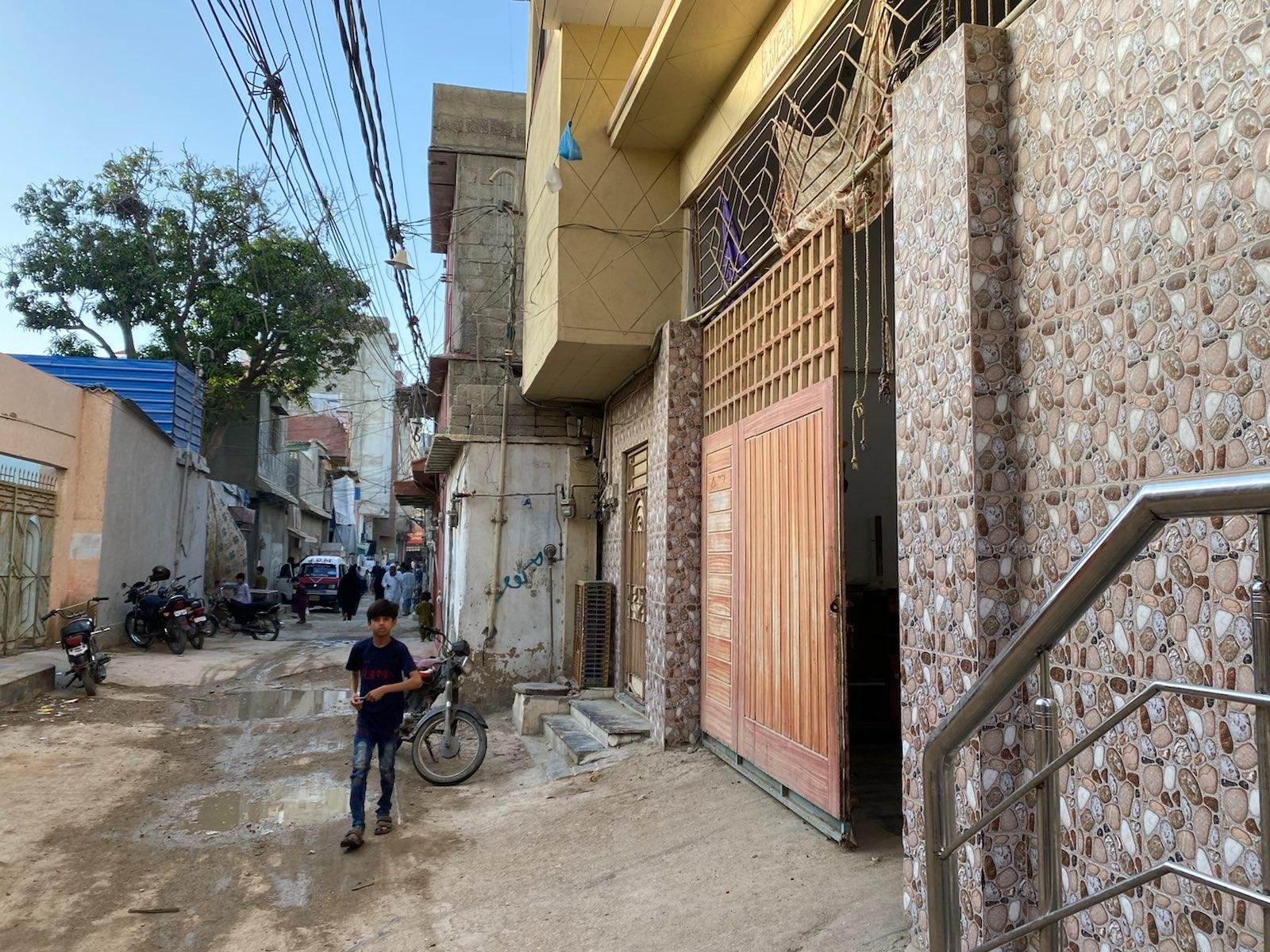
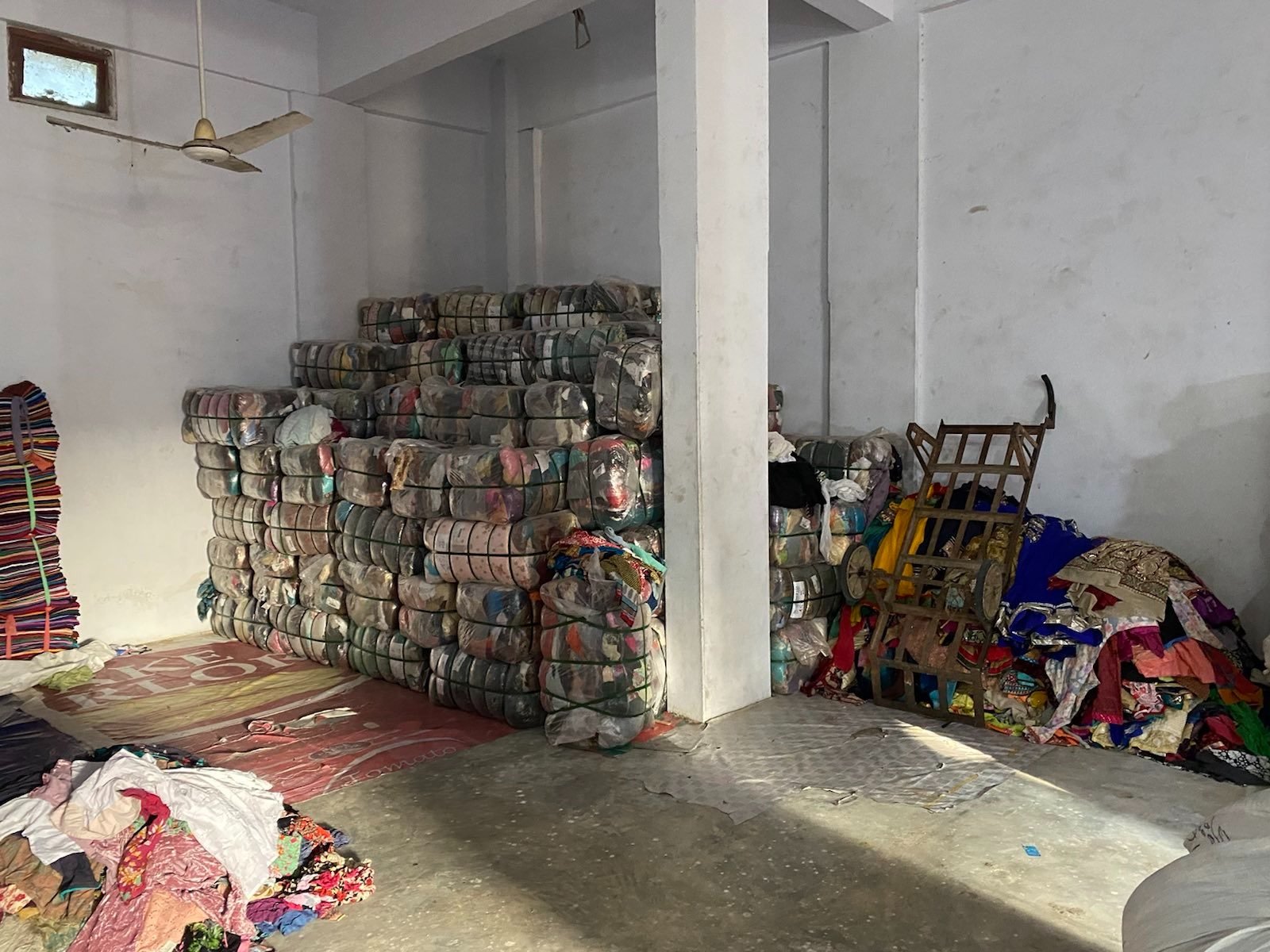

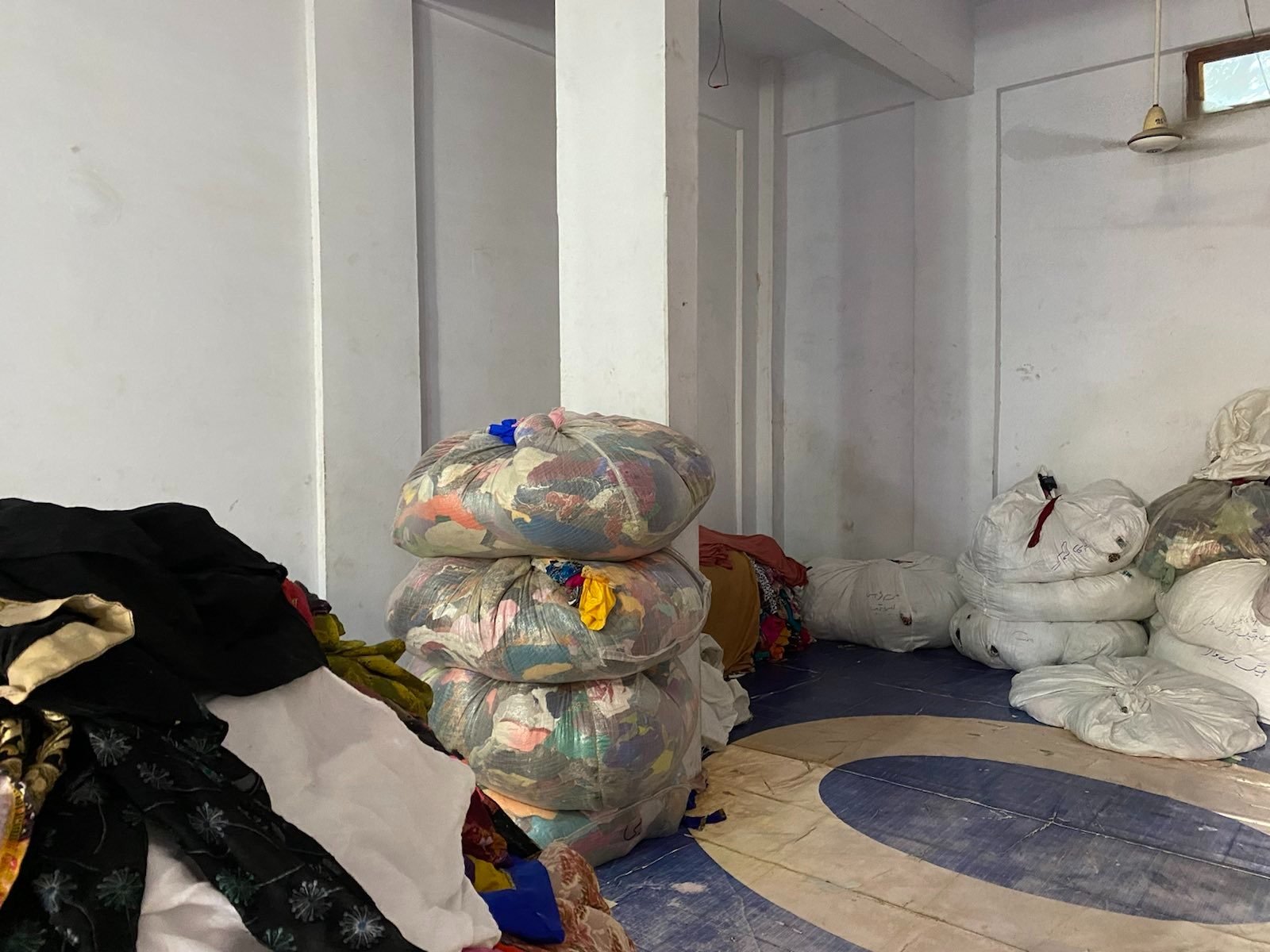
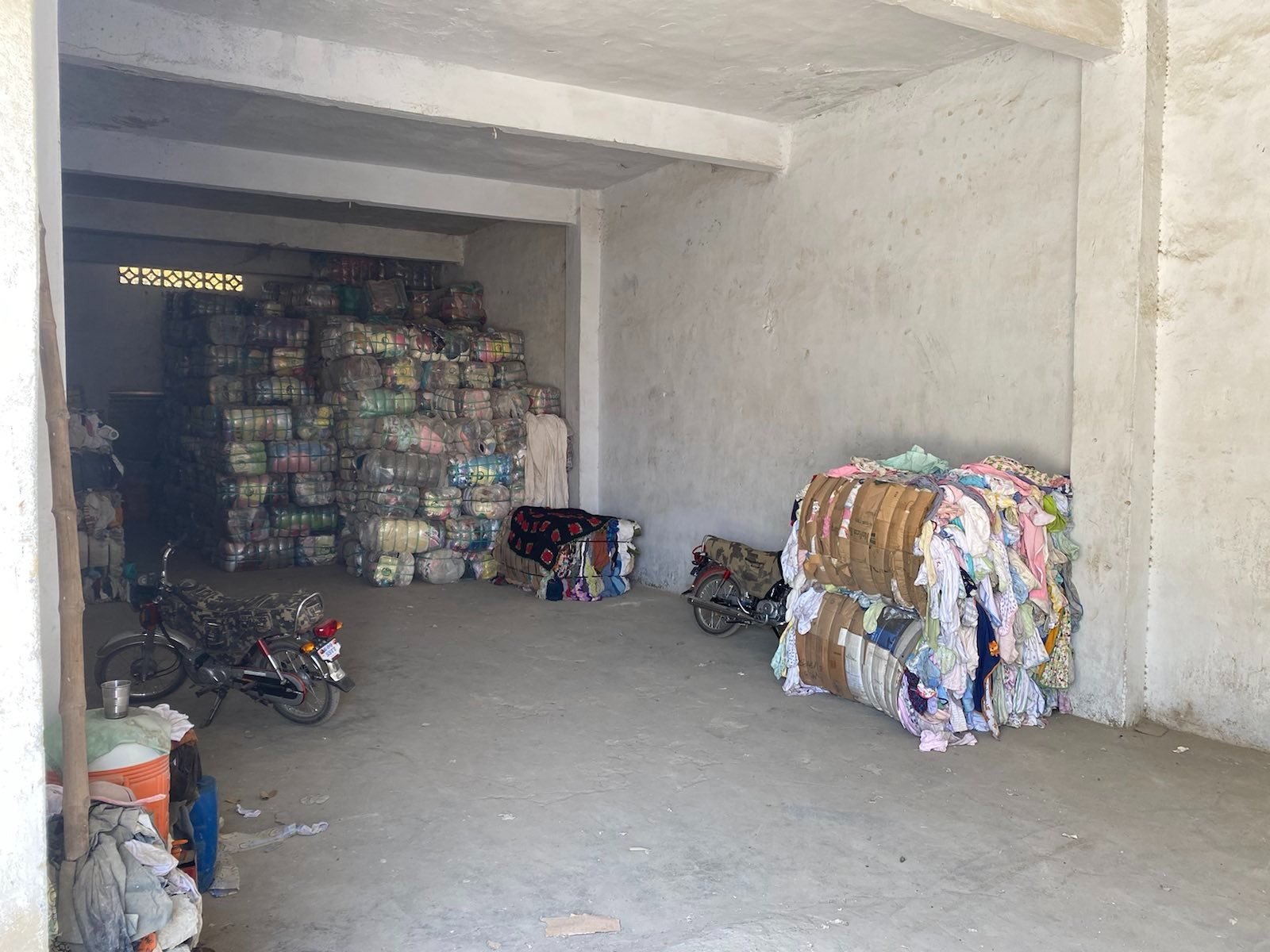
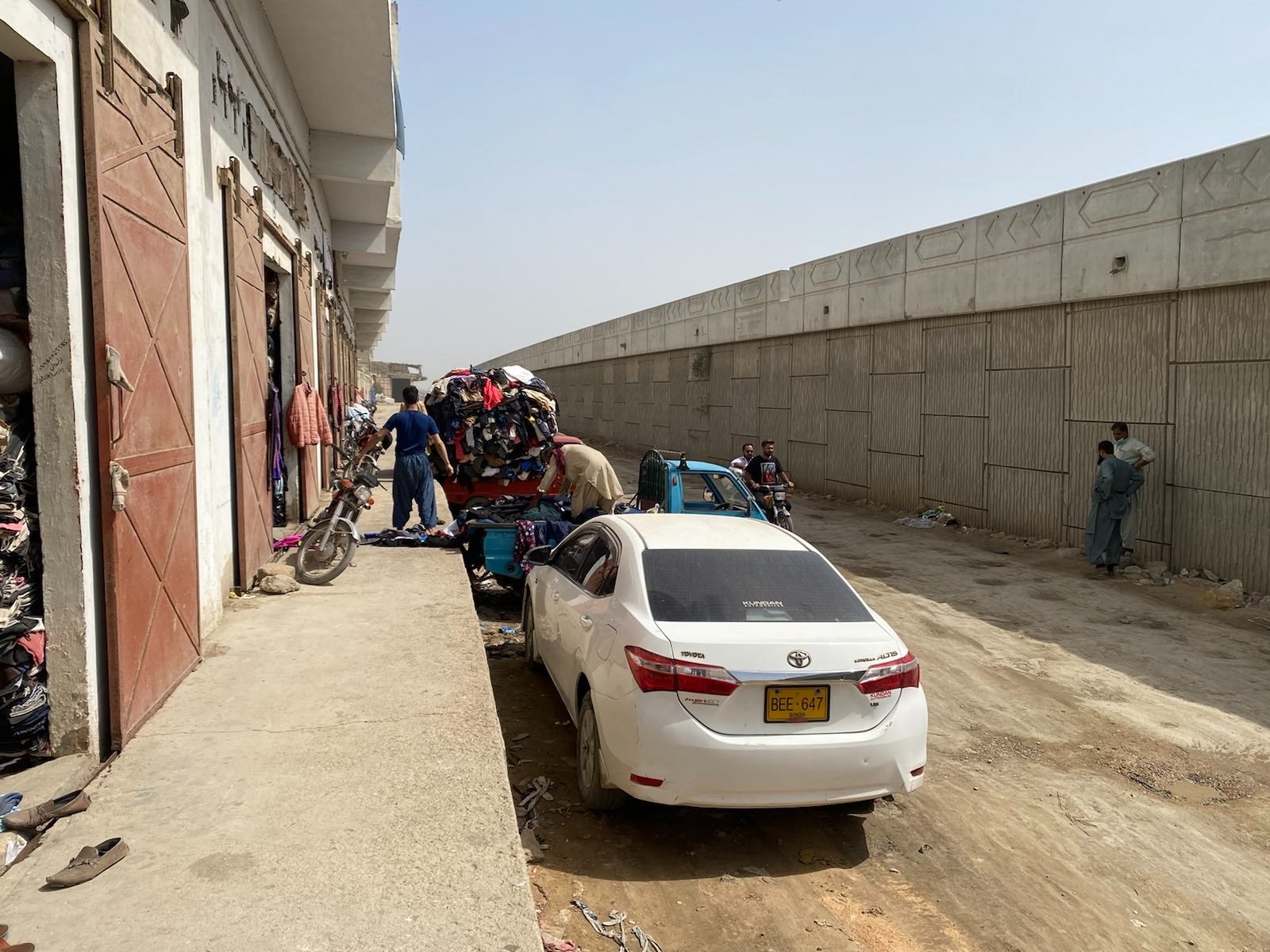

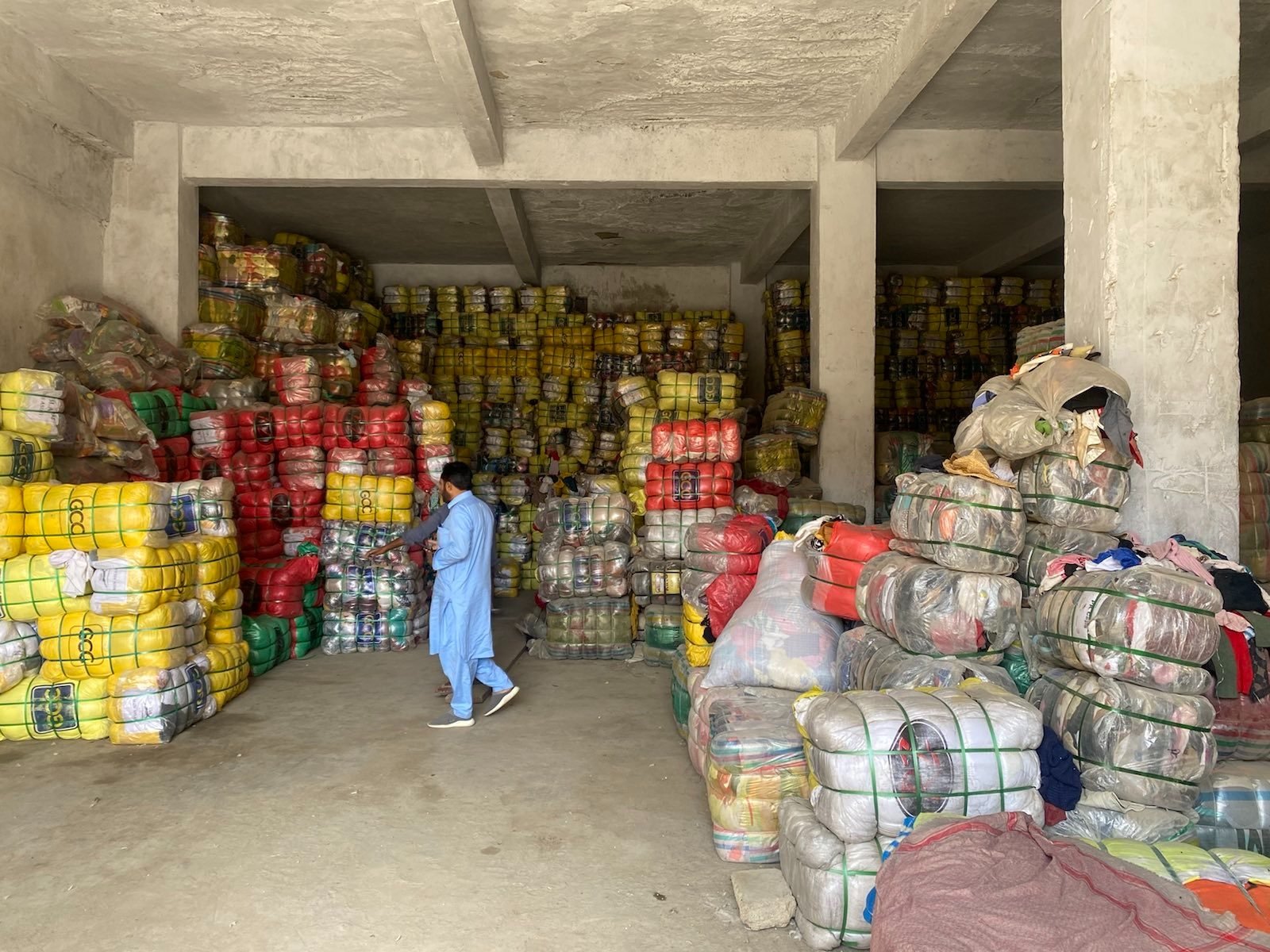

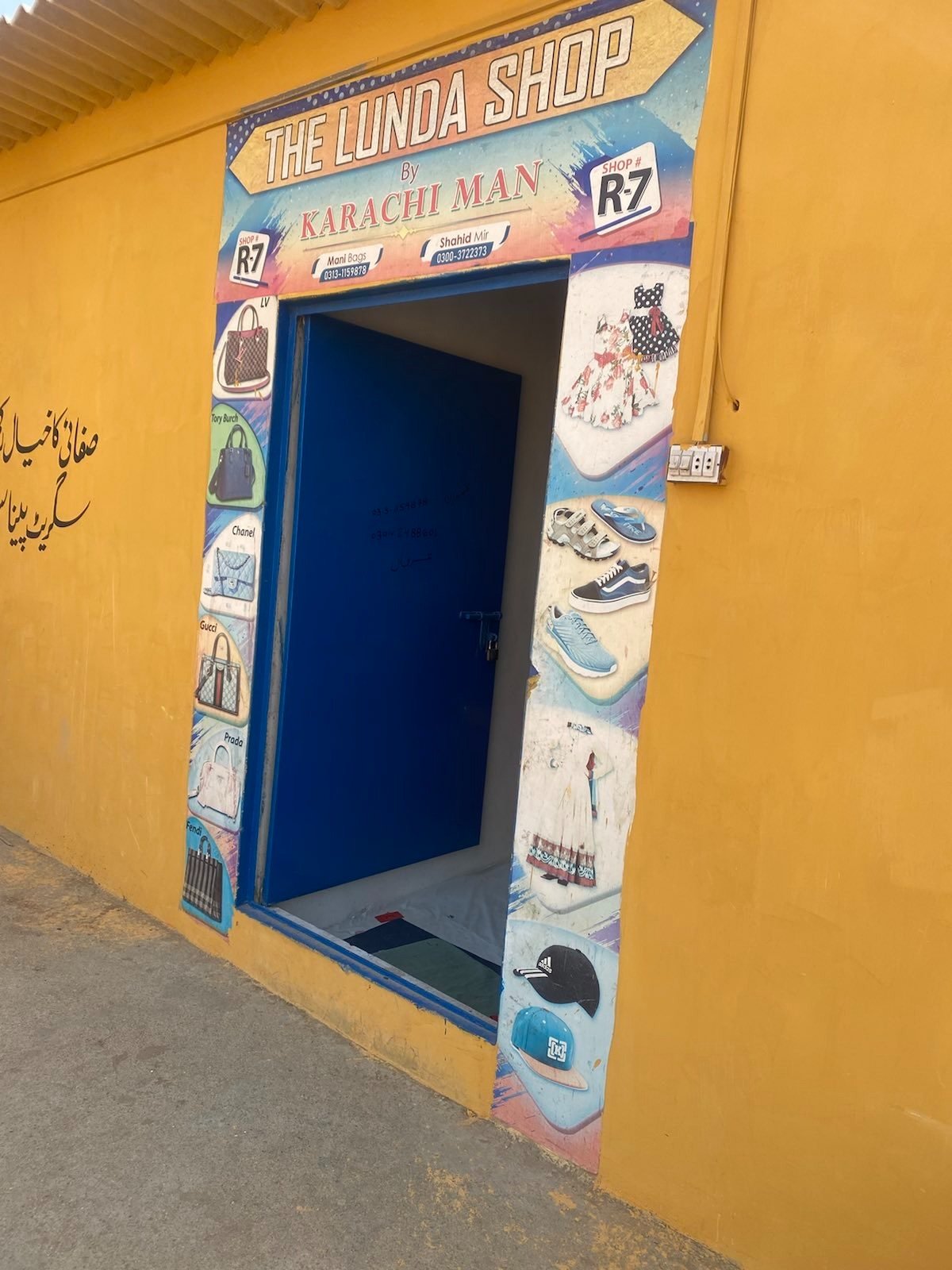
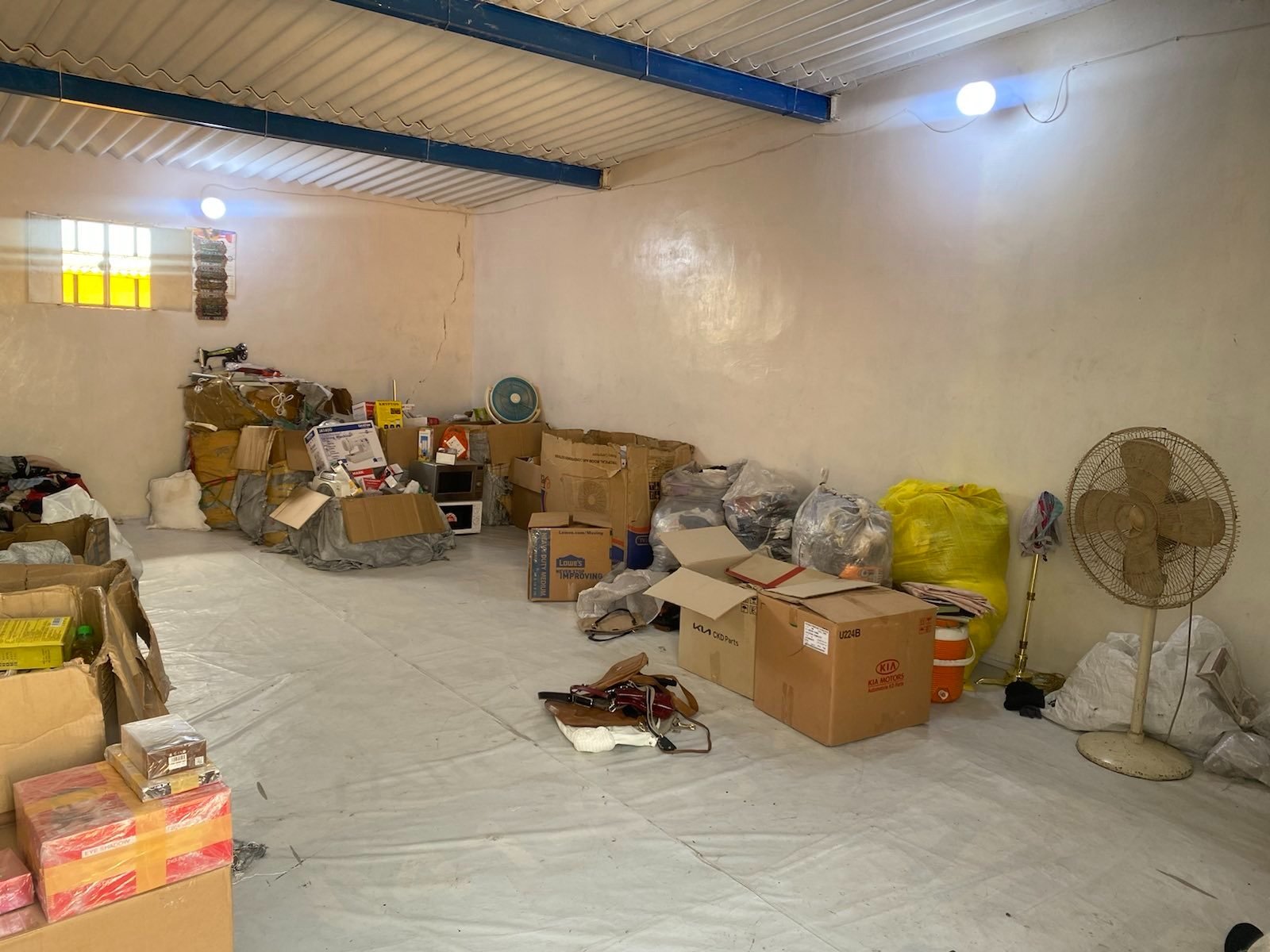
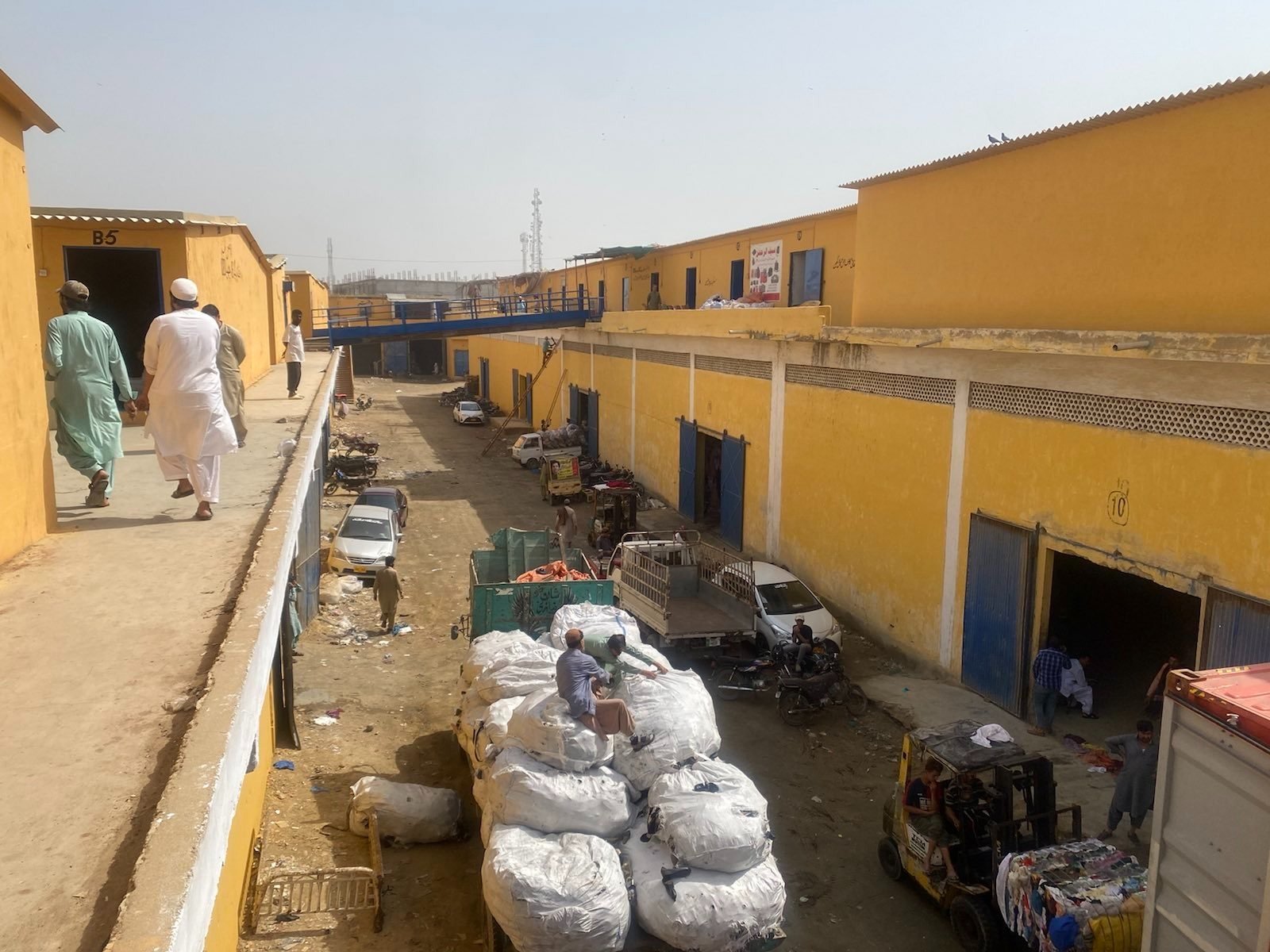








Waseem Akhtar told Oštro that in Pakistan tens of millions of lower- and middle-class consumers benefit from the import of second-hand clothing, along with everyone involved in processing, transportation, and other services.
According to him, the second-hand textile business provides a livelihood to many with the industry contributing to lower poverty and unemployment. These are jobs for workers who are unemployable in other industries or in business because they do not have the required skills; 70 percent are women.
Only a portion of the imported second-hand clothing is sold in Afghanistan, according to Akhtar. After sorting, washing, cleaning and repair, around 60 to 70 percent is exported to African countries and to Afghanistan. About a tenth is recycled and then used to make yarn or rugs.
Some of the clothing that is repaired and repackaged in Karachi makes its way to the colder and poorer northern Pakistan – and this is exactly where the Oštro backpack travelled. Its last stop before the battery of the tracker ran out was Larkana, a city 500 kilometres north of Karachi.
There, the second-hand clothing is not sold packed into large bales, it is hung up and displayed at stands. The prices are significantly lower than in Karachi because of the lower quality of the merchandise. They cost between 50 cents and 2.5 dollars – this is how much the torn backpack would run for, Oštro’s Pakistani contributor estimated.
The tracker broadcast its signal from Surya Padar Market, which is connected by Ghulam Bhutto Road with the commercial centre of Larkana. According to information provided by the Pakistani contributor, there are about two dozen shops there selling second-hand clothing.
The last time the tracker in Oštro’s backpack reported its location was in the vicinity of the rail tracks in Larkana, a poor working-class neighbourhood. According to representatives of Yepzon, which manufactured the tracker and analysed its data, it was then probably either destroyed, or it was located in an area where there is no access to a mobile network or satellite signal which drained the battery. It may also be that it was discovered in the backpack and destroyed.
The map shows the key points along its route. You can activate an additional layer showing the route of the Maersk Hidalgo and the Rosa.
1,250 backpacks for 32 trees
The textile industry is responsible for 1.2 billion tonnes of CO2 emissions per year, which is worse than the environmental footprint of international air and maritime transport, according to the Ellen MacArthur Foundation, which specialises in circular economy advocacy.
The backpack traversed at least five countries en route from Moravske Toplice to Pakistan, roughly 800 kilometres of which on land and almost 8,000 kilometres by sea. We asked experts at Umanotera, a Slovenian sustainable development foundation, to calculate the carbon footprint of the backpack.
They determined that its footprint amounted to 569 grams of CO2 equivalent, which stands for the sum of all greenhouse gasses emitted by the transport of a waste product and the work done by organisations involved, according to Renata Karba, deputy director and project manager at Umanotera. This is why it is measured in grams of CO2 equivalent.
The carbon footprint of transportation is measured in grams of CO2, not CO2 equivalent, since internal combustion engines produce mostly CO2.
»The carbon footprint [of the backpack] is not high because fuel consumption by vehicles such as lorry, train or ship is divided by the weight of the cargo,« Karba added.
For the sake of comparison, they calculated the carbon footprint of several specific examples of CO2 emissions into the atmosphere.
If a tonne of backpacks was to travel on the same route as Oštro’s backpack and with the same means of transportation, its carbon footprint would by 711 kilograms of CO2.
711 kilograms is equivalent to the quantity of CO2 that 32 trees absorb from the atmosphere in a year.
In 2019, the annual carbon footprint of the average resident of Slovenia was around 8.2 tonnes of CO2, Eurostat data shows. This means 711 kilograms is roughly 8 percent of the annual carbon footprint of an average Slovenian.
711 kilograms of CO2 is roughly the amount that a car would emit on a 4,400-kilometre journey.
We cannot confirm with certainty whether the backpack was sold in Larkana in northern Pakistan, but the Oštro’s Pakistani contributor thinks this is highly likely. He has determined that clothing and other textiles are not sold in bulk there, they are sold to the final link in the chain, the consumer, which prolongs the life of the merchandise.
Adil Jawad (freelancer, Pakistan), Miša Gagarin and Karina Shedrofsky (ID OCCRP), and Dániel Szöke (Direkt36) contributed to this story.
Do you know of a case of unsuitable waste management? Let us know about it via e-mail: contact@ostro.si. We shall check upon the relevant information and, in case of suspected irregularities, also investigate them.




